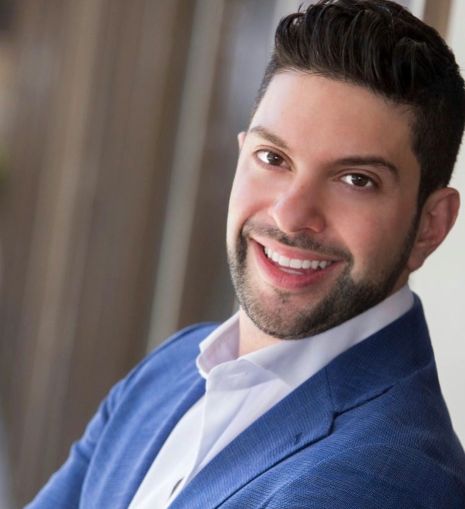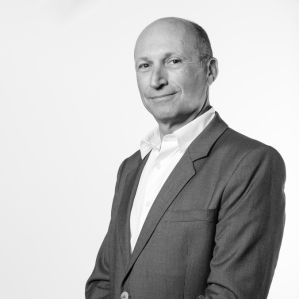Markwood’s Aftalion Dreams of a More Urban Future for LA
By Chava Gourarie June 24, 2019 12:10 pm
reprints
Parking garages might not be the sexiest real estate assets out there, but Simon Aftalion has found a way to make them a hot topic.
Aftalion is the development director at Markwood Enterprises, a boutique developer with a crop of mostly residential developments across Los Angeles. Aftalion joined the firm in 2014 to help grow the company’s development arm, and is helping introduce automated parking to Los Angeles while revamping a historic downtown L.A. parking garage.
Markwood has projects in several changing corridors, including a 53-unit residential building on Barrington Avenue in Brentwood and a mixed-use development on the corner of La Brea and Melrose Boulevards. Aftalion is a strong proponent of adding more density in a city known for its suburban sprawl. For Los Angeles to be the city of the future, it will need to find ways to build urban nodes that offer the 24-hour lifestyle that other cities offer, Aftalion said.
A key way to increase density is to find more efficient parking solutions, and Markwood has been a pioneer in introducing automated parking. At the moment, Markwood has three projects under construction with plans for either fully or semi-automated parking, including the Barrington development, and two more in the Mid-Wilshire area.
Commercial Observer sat down with Aftalion to discuss Markwood’s projects, puzzle-shift parking, and the path to a denser, more urban Los Angeles. The following is an edited version of the conversation.
Give us some background on Markwood.
Markwood was established as a real estate investment company. The two principals, James and Robert Mehdizadeh, who are from New York, planted their flag around 2010 and 2011. They started selling some of their assets in New York and exchanging the money and buying some properties in LA, with the intention of having a firm that owned and operated real estate in LA.
Soon, it became clear that there was a lot of opportunity being left on the table.
They brought in a gentleman called David Wright, to help them create a development business. I joined about a year after that. I recognized the exponential growth, and the opportunity to create and implement ways to make us into a development arm.
How did you get started in the business?
I was born in San Francisco, moved to L.A. when I was six, lived there all my life, then went to Georgetown for grad school.
Leaving L.A. during the recession, it was a very different place when I came back. When I lived on the East Coast I saw how people were really embracing the live-work lifestyle, to live how they work, because it’s such an urban setting.
On a national level we’ve embraced that sort of lifestyle, and Los Angeles is really starting to see a change in the approach developers take to creating the urban fabric in LA.
Most of your projects are residential. Why did that become your focus?
Our approach is multifamily oriented. We’re apartment guys, I love creating residential communities.
We also have this historic building in Downtown L.A., which is kind of my baby. It’s a historic building, built in 1927, a beautiful beaux arts building. It was built by the May Company (a nineteenth century department store) which needed refrigeration, so that’s why it’s three floors below grade, and five floors above. This asset was one of the legacy properties and once it came into my lap, I thought of it as the jewel of our pipeline.
We needed to do an adaptive reuse…It’s just sitting there, it’s a big parking structure.
The first idea was to add floors and make an apartment community. But eventually we realized that this building called for an office play. To me, creative office, or co-working is kind of like an apartment community, in that it’s small cubes with amenities et cetera. We decided to add a sixth or seventh floor for office, keep the parking and redo the retail, but instead of little stores, put in one contiguous tenant.
As developers, we are in the business of developing, and real estate is our proxy. At this point in the trajectory of development, we’re thinking about what service we’re providing. To me, commercial and residential have become very similar.
Tell me more about the garage. It’s been reported that you’re going to have an Erewhon market as the retail tenant?
Actually, we came to a mutual, amicable decision to part ways because the trajectory of the place being delivered was a year-and-a-half out, so we came to a decision not to do the lease.
I love [Erewhon] and I love their concept. We’re focused on the development of the whole 220,000 square feet. It’s not the type of play that allows for a retail tenant to move in immediately.
Is there a specific type of retail tenant that you’d like to see in that space, as well as in your retail spaces at your residential properties, at Barrington and La Brea?
At Barrington, that was my first development, we have a retail space. And yes, its an amenity to what’s above it, but it’s also an amenity for the neighborhood.
Catty corner across from Barringon, Jeff Appel is building a Whole Foods. As much as his retail is an amenity for us, our retail is an amenity for him. While they’re not giving you cash flow, they’re impacting your cash flow.
All I’m focused on is making sure that the retail tenants are the best they could possibly be, have great access to parking, and are separate from the other uses on the site. It’s not like we have big box malls, it’s a small retail jewel and it should fit into the neighborhood, and be complementary to the other uses on the site.
In three of your residential projects you have automated parking. Tell me how that came to be.
James and Robert acquired this assemblage at Barrington. We wouldn’t buy it today because it has so many obstacles. Because of the city’s zoning laws, our nice beautiful 16,000 square-foot-site became 13,000 square feet.
And in L.A. if you can’t park it you can’t build it. Building a ramp just wasn’t possible; it was not an option to do conventional parking. So I started thinking about alternatives.
I had an obsession with shipping containers and how they move things around at the port. I started to dive deep into what is automated parking — it’s a storage facility essentially, a real estate asset which takes your car and racks and rails it. I went to China and went on a tour of parking. I was recently in Japan. They don’t have ramps, I would just sit for 20 minutes and watch people walk in and out, ask for their cars, wait while talking and using their phones. It was great.
Wow, you really did your homework.
The way it works is that people drive into a bay, they leave their cars and swipe a fob or ticket. Lasers check that there are no people inside.
L.A. looks at it as storage so all of the sudden your efficiency is through the roof. On top of that you are able to have a ground floor that doesn’t have a huge ramp going through it, so we gained back 10,000 square feet of space that we made into live work units.
Also, this means that once autonomous vehicles pick up and parking is not as necessary, each of these pallets can become storage, and we can rent them out, and all of a sudden we have a new cash flow.
At Barrington the system is fully automated, but I also learned about a simpler system, a stacker system, a grid, called a puzzle shift, kind of like Tetris. In our smaller communities which cannot afford the fully automated play, we’re using the puzzle shift system to make it parkable, and therefore buildable.
Is the city amenable to these systems, or is it hard to get approval under the current zoning and building laws?
Every new system, every novel idea in the building department, requires LARR (Los Angeles Research Reports). The challenge is that each site is a little different, every automated system needs its own LARR certification, and that can happen throughout the course of construction. You have to make sure you’re tracking the process and you’re going to get the certificate. There is a handful of projects who have gone through the process and have obtained the LARR.
Why are you such a proponent of these automated systems?
The blurring of the lines between live and work is not L.A.-specific. It’s specific to our time. And L.A. happens to be a city that became a true city during the height of romanticism with the urban sprawl.
Our zoning is not made for density and celebration of the urban core. So the challenge is how do you create these live-work environments in areas of low density?
The good news is that the city, I think, really wants L.A. to become its own version of an urban centric city, with multiple nodes of density around transit. They really want to march towards that.
We have new legislation that upzoned a lot of areas across L.A. near public transportation. That was a sign from the city that if you can work with us, we’ll work with you. We have a huge housing issue in L.A. We have a deficit of 500,000 homes, so we need to build homes.
I’m very confident that over the next ten years we’re going to become more urban — with a mix of office and multifamily.
What’s next for Markwood?
When we created Markwood we identified the fact that we weren’t going to only be able to do sexy commercial corner sites. We identified that we need to have different investment vehicles, you need a bread and butter play.
That’s why I looked at sites in medium density zones; a lot of them have single family homes. If you employ density bonus plays, if you’re able to park it, on a small 8,000-square-foot site, now you have an asset type that you can replicate and build across the city. It can be specific to the neighborhood or subcommunity, it becomes a bread and butter play.
We’re in construction on two projects like this, those are my guinea pigs, and we have all the pieces in place to roll this out on a greater scale. I think this could be L.A.’s version of the row house. It’s an asset type that an institutional firm can get behind, if it’s ten of them. It can also be an asset that you sell to one person, it’s a very open-ended play, who you can sell it too, and who can rent it.
I don’t see these R3 (medium) densities changing that rapidly, but what I do see is the need for people to figure out how to build a proper community with the proper density in these areas.


